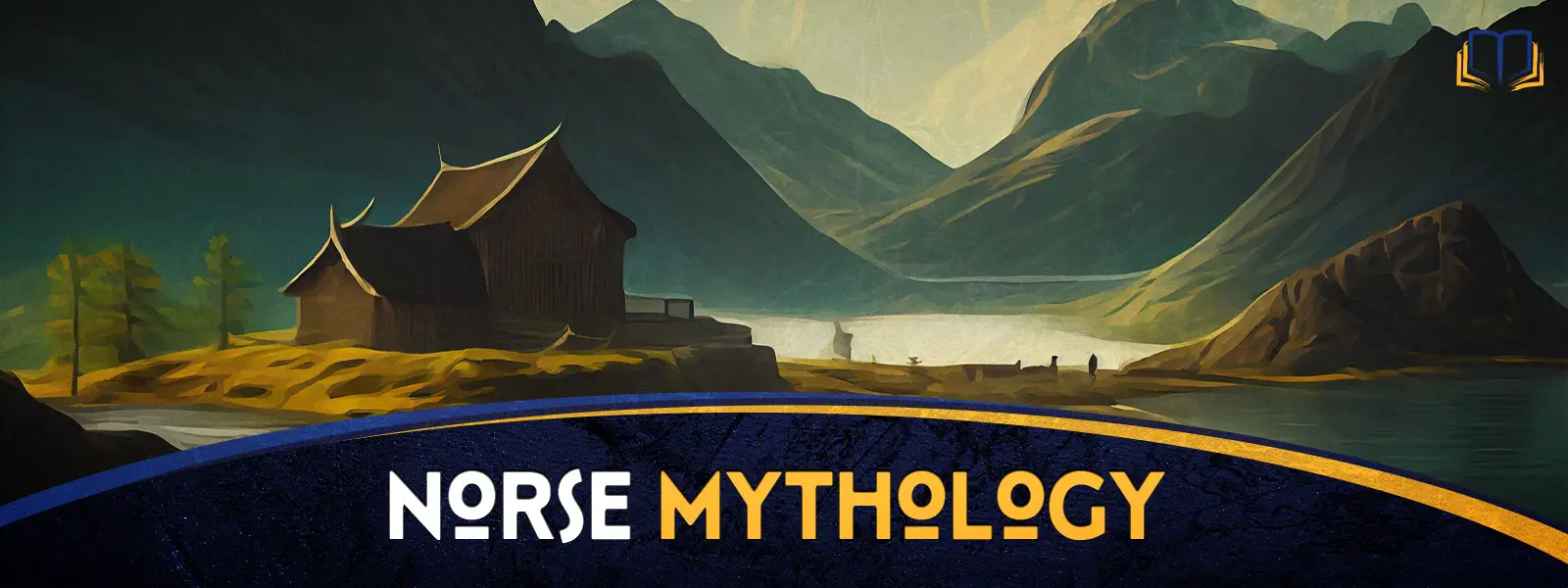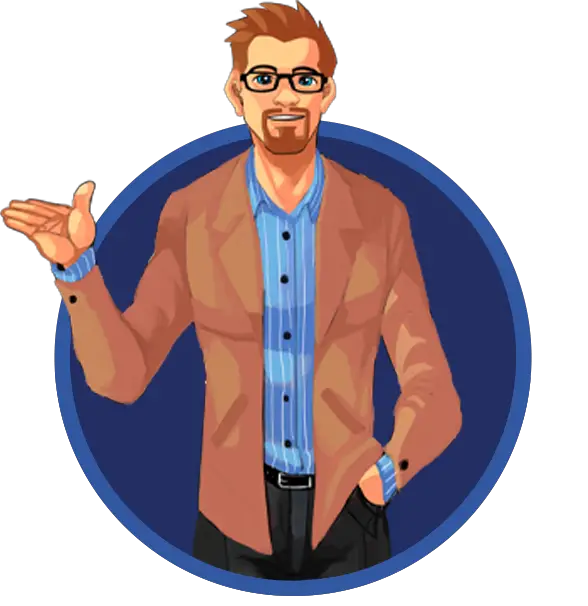The myths and legends of the Norse people are some of the most captivating and enduring stories in all of human history.
From the mighty gods of Asgard to the epic tales of battles and great heroes, there’s a reason Norse Mythology has resonated to the modern day.
In this article, we will explore the pantheon of Norse deities, including Odin, Thor, and Freyja, and delve into the stories of their adventures and battles.
We will also look at the concept of Ragnarok, the ultimate destruction of the world, and the rebirth that follows. So grab your hammer and shield and let’s journey into the mythical world of Norse mythology.
Latest Entries
If you’d like to learn more about Norse Mythology, we’re consistently putting out more articles where we can. Here are all the latest:
What is Norse Mythology?
Norse mythology is a collection of myths and legends from the Northern Germanic peoples. It centers around the pantheon of gods and goddesses who lived in Asgard, as well as the nine worlds that make up the universe.
The stories of Norse mythology are steeped in rich history and tradition, with tales of epic battles and great heroes.
The Norse gods were powerful and revered beings who had control over various aspects of life. Odin was the chief god, and he was associated with wisdom, war, and death. Thor was the god of thunder and war, while Freyja was the goddess of love and fertility. Other gods and goddesses included Loki, the trickster; Freyr, the god of prosperity; and Baldr, the god of light and purity.
The Norse believed in a cycle of creation and destruction, with the eventual destruction of the world during the event known as Ragnarok. However, it was also believed that after this destruction, the world would be reborn and the cycle would begin again.
The stories of Norse mythology have had a lasting impact on culture and literature, influencing everything from modern-day superhero comics to popular video games. The enduring popularity of these myths is a testament to the powerful and timeless nature of these stories.
Yggdrasil and the Nine Realms
One of the most iconic symbols of Norse mythology is Yggdrasil, the world tree. According to legend, Yggdrasil is a massive ash tree that stands at the center of the universe, connecting the nine realms that make up the Norse cosmos. The realms are:
- Asgard: The realm of the Aesir gods
- Vanaheim: The realm of the Vanir gods
- Alfheim: The realm of the elves
- Midgard: The realm of mortals
- Jotunheim: The realm of the giants
- Niflheim: The realm of ice and cold
- Muspelheim: The realm of fire
- Svartalfheim: The realm of the dwarves
- Helheim: The realm of the dead
Yggdrasil is said to be an eternal tree, and its branches and roots stretch out across the nine realms, connecting them all. The tree is so vast that it is home to many different creatures and races, including the great dragon Nidhogg, who gnaws at its roots.
Prominent Norse Myths
Of the many individual stories involving Norse mythology, there are a few that stand out, including:
- The Binding of Fenrir: one of the classic stories of Norse mythology, this is the tale of how the god Odin and the other gods tricked the great wolf Fenrir into being bound by a magical chain.
- The Mead of Poetry: this is a story about the creation of the mead of poetry, a magical drink that gives the person who drinks it the ability to create beautiful poems and songs.
- The Death of Baldr: this is the tragic story of how the god Baldr, the son of Odin, was killed by the trickster god Loki.
- The Lay of Thrym: this is a humorous tale about how the god Thor was tricked into dressing as a bride in order to retrieve his stolen hammer.
- Ragnarök: Ragnarök is the prophesied end of the world in Norse mythology, when all of the gods will die in a great battle with the giants and monsters.
Norse Mythology Characters
Next, here are some of the most significant characters to feature in Norse mythology:
- Odin: The king of the gods, Odin was an exceptionally important character in Norse mythology. He was the father of many powerful Norse gods and goddesses, including Thor, the god of thunder, and was known for his wisdom, magic, and battle prowess. He was often depicted as having only one eye, having sacrificed the other in exchange for knowledge.
- Frigg: The wife of Odin and queen of the Norse gods, Frigg was a goddess of marriage, childbirth, and domesticity. She was known for her wisdom and foresight, and was often associated with the earth and fertility.
- Thor: The god of thunder and one of the most popular gods in Norse mythology, Thor was known for his strength, courage, and protection of mankind. He was the son of Odin and Frigg, and was often depicted wielding his famous hammer, Mjolnir, which he used to protect the Norse gods from their enemies.
- Loki: The trickster god, Loki was a complex figure in Norse mythology. While he was sometimes considered an ally of the Norse gods, he was also known for causing chaos and mischief, often leading to conflict and destruction. Despite this, he was also seen as a god of fire and the hearth, and was associated with magic and cunning.
- Freyja: The goddess of love, beauty, and fertility, Freyja was one of the most revered goddesses in Norse mythology. She was also associated with war and death, and was said to have the power to choose which of the warriors who died in battle would be brought to Valhalla, the Norse afterlife.
- Freyr: The god of fertility, abundance, and prosperity, Freyr was the brother of Freyja and was also associated with peace and good weather. He was often depicted as a powerful and handsome god, and was one of the most widely worshipped deities in Norse mythology.
- Heimdall: The watchman of the Norse gods, Heimdall was the guardian of the rainbow bridge, Bifrost, which connected the world of the gods to the world of mortals. He was known for his keen senses and his ability to see and hear great distances, and was often depicted as a strong and vigilant defender of the gods.
North Mythology Sources
There are many texts that reference Norse mythology, but here are a few of the most important ones that have shaped the myths:
- The Poetic Edda: The Poetic Edda is a collection of Old Norse poems that contain many of the myths and legends of Norse mythology. It includes poems about the creation of the world, the deeds of the gods, and the end of the world. This text is one of the most important sources for understanding Norse mythology.
- The Prose Edda: The Prose Edda is a book written by the Icelandic scholar and poet Snorri Sturluson in the 13th century. It is a handbook for poets that contains many of the myths and legends of Norse mythology, as well as instructions on how to write poetry in the Old Norse style. The Prose Edda is a crucial source for understanding Norse mythology.
- The Heimskringla: The Heimskringla is a book written by Snorri Sturluson that contains a history of the kings of Norway. It includes many references to Norse mythology, as well as stories about the gods and heroes of Norse legend. This text is an important source for understanding the relationship between Norse mythology and the history of Norway.
- The Sagas: The Sagas are a collection of Icelandic stories that were written in the 13th and 14th centuries. They contain many references to Norse mythology, and include stories about the gods, goddesses, and heroes of Norse legend. The Sagas are an important source for understanding Norse mythology.
Norse Mythology Artifacts and Weapons
Norse mythology is full of artifacts and weapons. Here are just some of them:
- Mjolnir: This is the hammer of Thor, the god of thunder. It is known for its ability to destroy mountains and create thunder and lightning when thrown.
- Gungnir: This is the spear of Odin, the king of the gods. It is known for its unerring accuracy and its ability to strike fear into the hearts of Odin’s enemies.
- Skofnung: This is the sword of Hrólf Kraki, a legendary Danish king. It is known for its sharpness and its ability to protect its wielder from harm.
- Helm of Awe: This is a powerful Norse symbol that is said to give its wearer protection and fearlessness in battle. It is often depicted as a circular design with eight arms emanating from the center.
Norse Mythology Creatures
Norse mythology features many creatures, both good and evil. Here are a few examples:
Fenrir: This massive wolf was one of the most feared creatures in Norse mythology. It was the son of Loki and the giantess Angrboda. It was so big that when it opened its mouth, its jaws reached from the earth to the heavens. Eventually, the gods bound Fenrir, but it was prophesied that it would one day break free and bring about the end of the world.
- Jörmungandr: This enormous serpent was the middle child of Loki and Angrboda. It was so big that it was able to encircle the entire world and grasp its own tail. It was said that when Jörmungandr let go, the world would end.
- Sleipnir: This is the eight-legged horse of Odin. It is the fastest horse in the world and can run on land, sea, and air.
- Grendel: This monstrous creature was the main antagonist of the epic poem Beowulf. It was a huge, savage beast that terrorized the kingdom of the Danes, killing and eating anyone it came across.
- Draugr: These were undead creatures that were once humans, but returned from the dead to haunt the living. They were incredibly strong and could not be killed by normal means. They were often buried with grave goods to keep them from rising from the dead.
- Jötnar: The Jötnar were a race of giants who were often at odds with the gods. They were huge and powerful, but they were also greedy and cruel.
Norse Mythology in Popular Culture
Norse mythology is still popular today. Here are a few examples of Norse mythology in modern pop culture:
- Thor: A Marvel Comics character, first appearing in Journey into Mystery #83 in August 1962. Thor is based on the Norse god of the same name and wields a powerful hammer called Mjölnir.
- God of War: This popular video game franchise, which began in 2005, is based on Greek and Norse mythology. The main character, Kratos, is a Spartan warrior who battles various Norse gods in God of War 4 and 5.
- Vikings: This popular television series, which ran from 2013 to 2020, is inspired by the Viking sagas and features Norse gods and mythology as a central part of its story.
- Assassin’s Creed Valhalla: This popular video game, released in 2020, is set in ninth-century England and features Norse mythology as a central part of its story. The game’s protagonist, Eivor, is a Viking raider who must confront various gods and monsters from Norse mythology. The game also features the Norse concept of Valhalla, the afterlife where brave warriors go to fight and feast.


